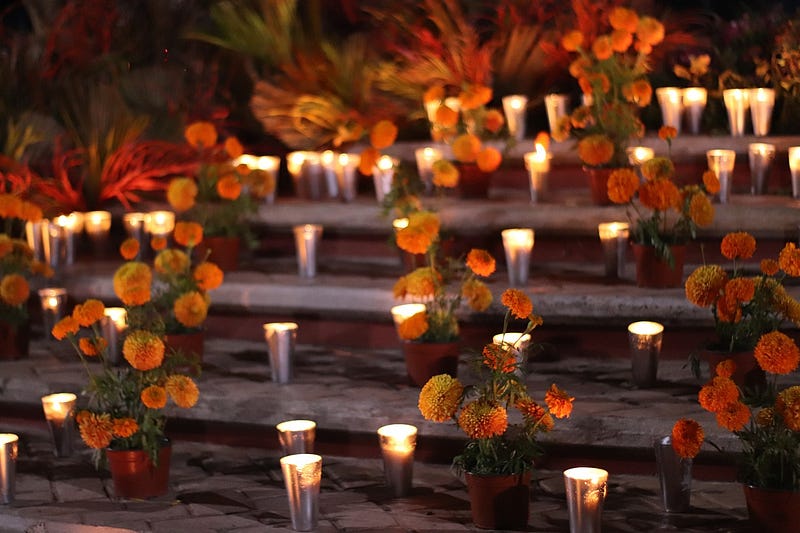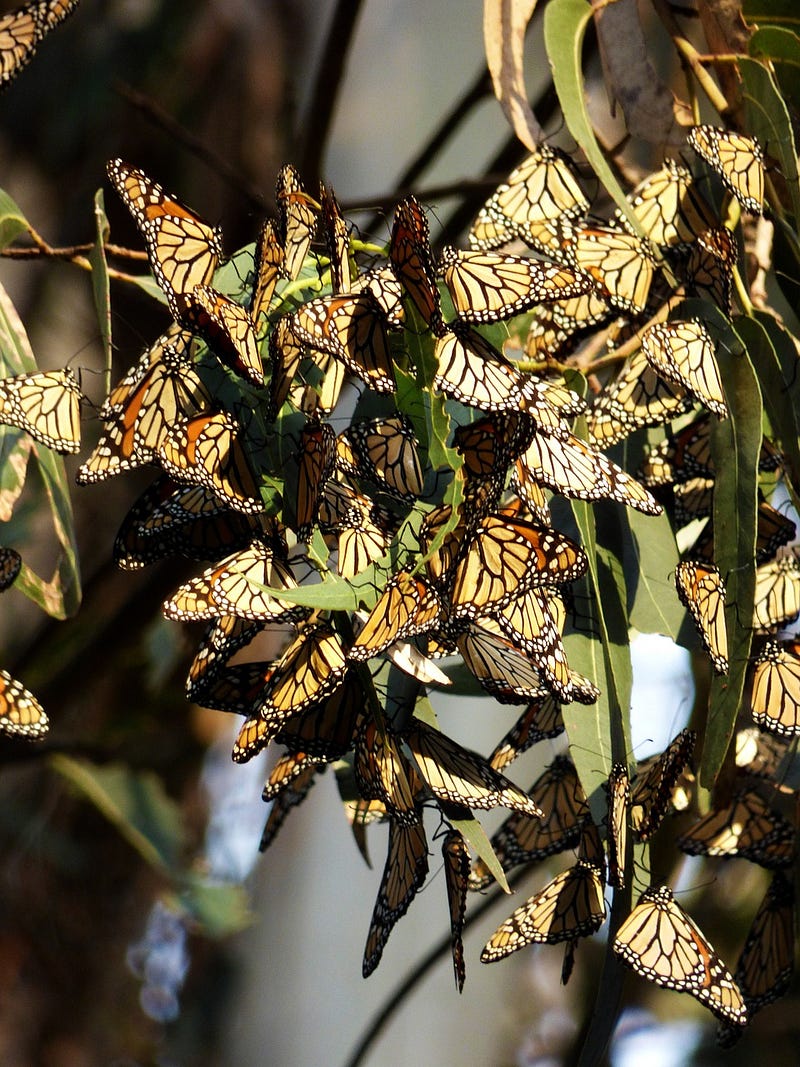Winged Messengers: Monarch Butterflies in Mexico’s Day of the Dead Celebrations
This blog is an abbreviated version of a feature story I wrote for Smithsonian’s Folklife Magazine last year. You can read the full story, complete with the voices of Mexican activists from the frontlines of monarch conservation efforts, here.

Each fall, like clockwork, clouds of monarchs descend upon the highland forests of central Mexico. Their arrival marks the finish line of a 3,000-mile journey: once in a lifetime, the butterflies fly south from their summer breeding grounds in Canada and the United States and return to the same oyamel fir forests as generations before them. Millions of fluttering orange wings blanket the forest, enveloping the branches that will shelter them throughout the winter months to come.
How the monarch’s internal compass navigates them, generation after generation, to the same overwintering site remains a mystery. To add to the mystique, the annual migration coincides with the Day of the Dead celebrations.
The monarch butterfly was added to the IUCN’s Red List in July 2022 following an estimated population decline of nearly eighty percent since the mid-1990s. For Mexico, conservation of the nationally iconic species has both cultural and environmental gravity.
According to pre-Hispanic folklore in the indigenous forest communities of central Mexico— the Purépecha of Michoacán and the Mazahua of Estado de México, migrating monarchs carry the souls of ancestors visiting from the afterlife. For centuries, Mexico’s monarchs have served as a powerful cultural symbol of connecting the living to the dead.
Day of the Dead traditions today are a syncretic blend of the celebration’s pre-Hispanic origins and Catholic elements. The monarch’s original spiritual symbolism, though, is still very much intact. Decorated ofrenda home altars to the dead often include monarch imagery nestled between candles, calaveras (sugar skulls), and cempasuchil (marigold flowers). Songs reference the butterfly in their lyrics, and dancers in monarch-inspired costumes echo the insect’s delicate movements.

In the highlands of Michoacán, a state along Mexico’s Pacific coast, the monarch’s symbolic resonance is especially deep-rooted. Here, local Purépecha legend teaches that the butterflies carry the spirits of warriors and that the flapping of their wings relays messages from the afterlife.
Home to one of the species’ most important pilgrimage sites— the Monarch Butterfly Biosphere Reserve— Michoacán has become a focal point for conservation efforts. The rise of unsustainable logging in the region fractured locals’ relationship to surrounding forests and the biodiversity they once sustained. Monarch overwintering sites, which once encompassed over fifty acres in Michoacán, dwindled to as few as five.
Today, NGO and community efforts have helped restore Michoacán’s forest ecosystems and secure safe overwintering sites for the monarchs. In the process, they have also created alternative revenues for neighboring communities through the sustainable tourism they attract. As communities return to responsible forest stewardship, a new kind of harmony has blossomed.

Mexico’s forest conservation efforts are encouraging, but more is needed to protect the monarchs’ long-term survival. Along their migratory route to Mexico, the butterflies rely on milkweed— where they lay their eggs— and nectar plants across Canada and the United States. But with herbicide use and habitat destruction, milkweed is on the decline.
Meanwhile, pop culture has increasingly embraced Day of the Dead in recent years. Movies like Disney’s Coco have attracted international attention, and holiday celebrations once reserved for rural towns have spread to Mexico’s urban centers and beyond. But while this rise in recognition could be a step toward reconnecting with ancestral traditions as a means of realigning with the natural world, there is a delicate balance between celebration and commercialization.
Revisiting the beliefs that ground us to the natural world emboldens our connections to keystone species like the monarch. The butterfly’s symbolic resonance has helped to mobilize local and international communities alike in doing their part for nature.
Conversations surrounding monarch protection unite systems of knowledge. They remind us of the rootedness between who we are and what we are a part of, and reveal how the rippling loss of a species can reverberate through the stories that underpin our cultural identities. Inversely, reconnecting with these stories opens us up to the wisdom of the natural world.
